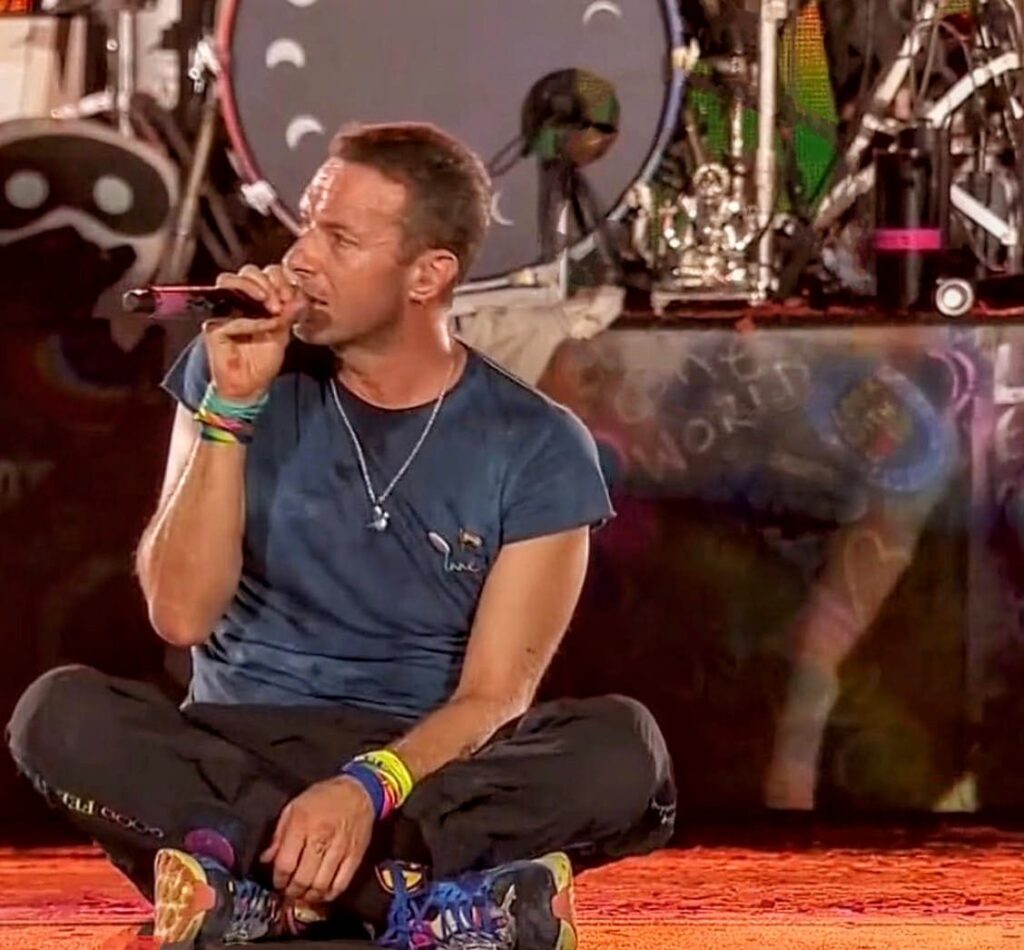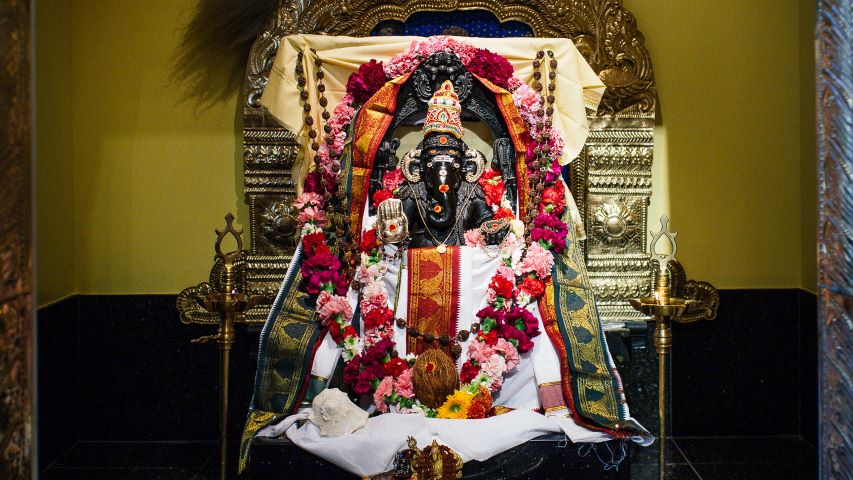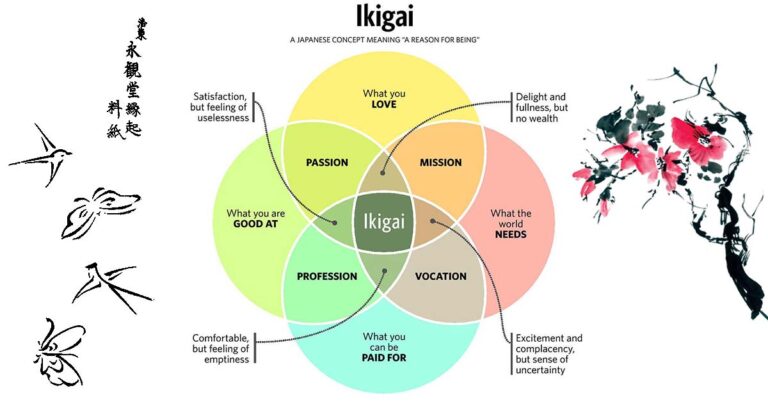Introduction: When Western Music Meets Eastern Spirituality
In 2025, Coldplay’s frontman, Chris Martin, sparked curiosity and admiration during his band’s Ahmedabad concert by prominently featuring an idol of Lord Ganesha on stage. To casual observers, this might have seemed like a nod to Indian culture. But for those familiar with Ganesha’s profound spiritual symbolism, Martin’s gesture hinted at something deeper—a bridge between modern music and ancient wisdom. In this blog post, we’ll explore the philosophical secrets of Ganesha and why Chris Martin’s choice reflects more than just cultural appreciation.

Chris Martin’s Fascination with Indian Culture
A History of Cultural Engagement
Chris Martin and Coldplay have long embraced global cultures in their music and performances. From collaborating with Indian artists like A.R. Rahman to incorporating Sanskrit chants in their song Kaleidoscope, their work resonates with themes of unity and spirituality. During the 2019 Kumbh Mela, Martin even took a symbolic dip in the Ganges River—a ritual act of purification in Hinduism. These gestures reveal Martin’s openness to spiritual exploration rather than mere aesthetic appropriation.
Why Ganesha?
Ganesha, the elephant-headed deity, is one of Hinduism’s most beloved and recognizable figures. But Martin’s use of the idol wasn’t just about aesthetics. To understand its significance, we need to unpack Ganesha’s hidden philosophical layers.

The Secrets of Ganesha: Beyond the Elephant Head
Ganesha as the “Portal to the Omnipresence”
In the Upanishadic dialogue shared earlier, the Rishi explains that Ganesha is not a god in the traditional sense but a gateway to the formless, infinite Divine. The idol represents:
- Achintya (beyond thought),
- Avyakta (the unmanifest),
- Ananta (the endless).
For Martin, placing Ganesha on stage could symbolize an invitation to the audience to transcend ordinary perception and connect with a universal, unifying energy—a theme central to Coldplay’s music.
Ganapati – The Cosmic Organizer
Ganesha is also called Ganapati, the Lord of Clusters (Ganas). The Rishi describes the universe as a series of interconnected clusters—from atoms to galaxies. Ganesha’s role is to maintain cosmic harmony, ensuring these clusters coexist without chaos.
In a concert context, this mirrors Coldplay’s mission: to unite diverse audiences (clusters of people) through music. The Ganesha idol might symbolize Martin’s aspiration to create harmony in a fragmented world.
The Deeper Message in Chris Martin’s Gesture
Ganesha as the “Remover of Obstacles”
One of Ganesha’s primary roles is Vighnaharta—the remover of obstacles. By invoking Ganesha, artists and seekers alike believe they can overcome creative or logistical challenges. For a global tour as complex as Coldplay’s, the idol could represent a plea for smooth execution and a metaphor for breaking barriers between cultures.
The Fourth State of Consciousness (Turiya)
The Rishi links Ganesha Chaturthi to Turiya, the fourth state of consciousness beyond waking, dreaming, and sleeping. This state represents pure awareness and oneness with the Divine. Coldplay’s concerts, known for their immersive visuals and meditative melodies, aim to create a collective transcendent experience—akin to Turiya. The Ganesha idol becomes a visual anchor for this shared spiritual journey.
Criticism and Cultural Sensitivity
Appreciation vs. Appropriation
While many praised Martin’s gesture, others questioned whether it risked reducing a sacred symbol to a stage prop. However, context matters:
- Martin engaged with Indian traditions respectfully (e.g., participating in the Kumbh Mela).
- Coldplay’s collaboration with Indian musicians and use of Sanskrit show intentional cultural fusion, not exploitation.
The Rishi’s Warning: “Form vs. Essence”
The Upanishadic Rishi cautions against clinging to Ganesha’s form while ignoring his essence. Similarly, Martin’s use of the idol succeeds only if audiences grasp its symbolic meaning—unity, transcendence, and inner awakening—rather than viewing it as exotic decor.
Why This Matters for Global Audiences
Music as a Spiritual Bridge
Coldplay’s integration of Ganesha reflects a growing trend: artists blending Eastern spirituality with Western music to foster global unity. Think of Beyoncé’s use of Hindu mudras or The Beatles’ immersion in Indian philosophy. These acts remind us that spirituality transcends borders.
Ganesha’s Universal Appeal
Ganesha’s symbolism—overcoming obstacles, unifying diversity, and accessing higher consciousness—resonates universally. In a polarized world, his message is more relevant than ever.
Conclusion: The Silent Conversation Between Art and Spirituality
Chris Martin’s Ganesha idol isn’t just a stage accessory. It’s part of a silent dialogue between modern artistry and ancient wisdom—a reminder that music and spirituality share the same goal: to dissolve boundaries and elevate the human experience. As the Rishi teaches, Ganesha is not an elephant-headed god but a doorway. Perhaps, through Coldplay’s concerts, thousands walked through that door, even if just for a moment.
Om Gam Ganapataye Namo Namah
(Salutations to the Lord of Clusters, Ganesha)





